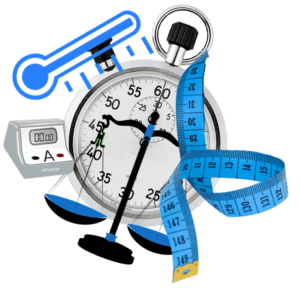Table of Contents
Physics and measurements are mostly concerned with our daily lives. The study of nature and its laws is the subject of physics, a branch of science. For example, if we understand Newton’s laws of gravitation and motion, we can explain how the moon orbits the earth, how an apple falls from a tree, and how tides in the sea change on a full moon night. Physics is concerned with the fundamental laws that govern all aspects of life. We use measurement in our daily lives, and it helps us understand the fundamentals of physical quantities. Everyone in his life must have gone to the market to buy groceries and vegetables at some point. If you go to the market to buy potatoes, the vegetable vendor will ask you how many kilograms you want, and you will tell him that you want 5 kg. This is the weight of the potatoes, 5 kg. If you go to the store to buy milk, you will do so in liters. When you buy clothes, you do so in meters. You will also learn how to use dimensional analysis to check equations for errors. This weighing machine can be used to measure mass.
Similarly, length can be measured with scales, measuring tapes, and other tools. We will be able to determine the units, dimensions, and formulas of physical quantities as well as measure the size of an object. After measuring these values, we will learn how to calculate measurement errors and how to check the accuracy of our calculations.

Physics And Measurements
The quantity is measured in two parts: the first part indicates how many times the standard unit is used, and the second part represents the name of the unit. In this chapter, we will look at the standard units of fundamental physical quantities such as length, time, mass, and temperature, as well as derived quantities that can be expressed in terms of fundamental quantities. We will learn about the dimensional analysis of quantities and then be able to determine whether or not the given formulas for any quantity are correct. If you measure something and get an error in that measurement, you will be able to find the error in your measurements after studying this chapter. Measurement, like any other scientific subject, is an essential component of Physics. Measurement is an essential component of the human race; without it, there would be no trade or statistics. The philosophy of measurement can be seen in small children who have no idea what math is.
Kids try to compare their height, the size of their candy, the size of their dolls, and the number of toys they own. All of this occurs even before they understand math.
Math is hardwired into our brains long before we begin to learn it. Math is a great way to learn about anything, which is why computers are involved in almost everything because they are good at math.
Dimensional and Unit Analysis
In mathematics, dimensional analysis is the analysis of the relationships between different physical quantities by considering their dimensions. In physics, the dimensions of a physical quantity are the product of its mass, length, and time units. For example, the dimensions of velocity are mass (M) length (L) per time (T).
Dimensional analysis is used to make calculations easier and to understand the relationships between physical quantities. In particular, it can be used to convert between different units of measure. For example, the dimensions of a liter are mass (M) length (L) time (T) squared. So, to convert from liters to cubic meters, we can use the following equation:
1 cubic meter = 1,000 liters
This equation can be rearranged to solve for liters:
1,000 liters = 1 cubic meter
Unit analysis is a special case of dimensional analysis in which the dimensions of the physical quantities under consideration are all the same. In unit analysis, the units of measure are simply converted into a common unit. For example, the units of acceleration are meters per second squared. To convert meters per second squared to kilometers per hour squared, we can use the following equation:
1 kilometer per hour squared = 1,000 meters per second squared
This equation can be rearranged to solve for meters per second squared:
1,000 meters per second squared = 1 kilometer per hour squared
Dimensional analysis is used to determine whether or not a given equation is dimensionally correct. Dimensional analysis is performed on an equation by removing the numerical components and leaving only the unit types (length, mass, or time). It can also be used to figure out what type of unit is being used for an unknown variable. The force of gravity, for example, may appear as follows:
The unit analysis is similar to the dimensional analysis in that it employs units rather than basic dimensions. The same principle applies; the numbers are removed, and the units on both sides of the equation are verified to be equal.
Formula for Density
Density Formula is the formula for density. d = densities m denotes mass and v denotes volume.


